North African
Efforts
Tunisia

Preservation efforts of the
Sloughi in the region of Bou Salem
by Dr. Dominique de
Caprona
© de Caprona
2012
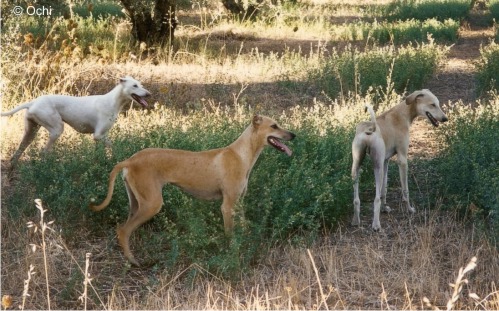 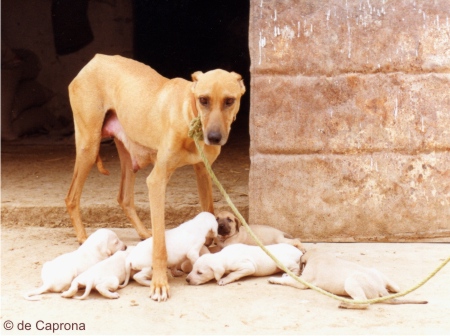
Q'Taya, Mouja and Skhab 1 ~ Lisa,
Mouja's sister, with her
puppies 1999
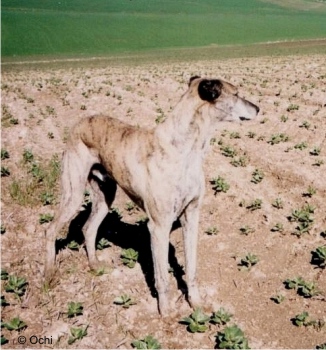 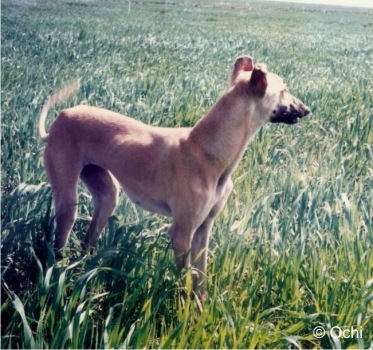
Djoumine's Ghazel ~ Southern Tunisia's
Richa
Several years ago, in Spring of 1999, my
sister
and I
visited Tunisia for the first time in our lives. During a round trip
that took us from Ghardimaou in the far Northwest to Douz in the far
South
and back, we stopped among other places at Bou Salem, a town in
Northern Tunisia, about 2 hours West of Tunis. We were introduced there
to Raouf Ochi and his wife Lamia, and other hunters of the region. We
saw 6 adult Sloughis in two different homes, 2 males and one female
in each. The red fawn Sloughia, named Lisa, had a litter of very young
puppies. All
these Sloughis had colors ranging from pale sand to red fawn. At the
time there
were approximately 15 Sloughis owned by some 10 hunters within a radius
of some 25 kms around
Bou Salem.
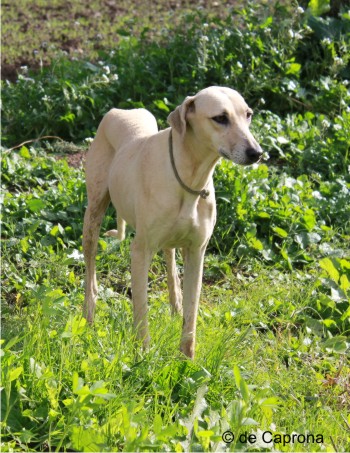 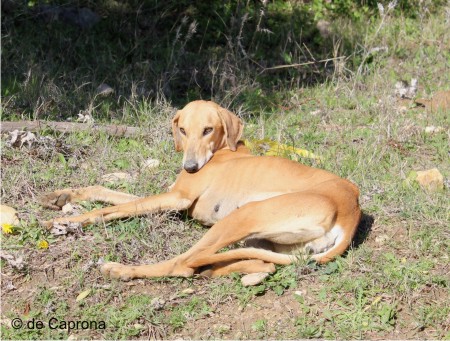
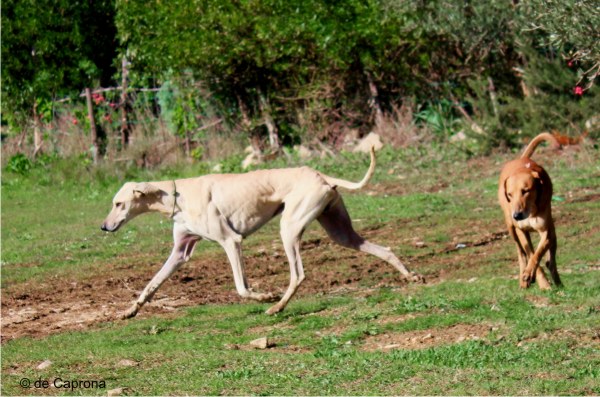
Little did I know then that almost 13
years later, in December of 2011, I would take ten days of vacation and
accept Raouf Ochi's invitation to return to Bou Salem. As
Raouf
Ochi
took
me
and
others
to
visit
Sloughi
owners
in
the
region,
a
very
different
picture
of the Sloughi situation unraveled before my eyes. The
population has very much
grown. In spite of the Tunisian Winter with its rain, puddles, mud, and
its cold, people came out of their houses to proudly present many
Sloughis and Sloughias of all colors and ages. There are now close to a
hundred Sloughis in the region and many hunt with them. I was pleased
to learn
that several of the first Sloughis and puppies I
had seen in 1999 had passed on their genes to future generations.
Sloughis from other bloodlines coming from elsewhere had also been
included
and contributed to enlarge the gene pool. Some
of the 1999 Sloughis came from Ghardimaou
(Heinz Gert and Gisela Bergman' breeding) descending from Sloughis
originating in Relizane (Algeria) and Tunisia (Meknassy, Tozeur) such
as Skhab 1.
Others were Skhab of Moulares, Douna
of Hadjeb Layoun (a
small town in the Kairouan Governorate) and their daughters Lisa and
Mouja, Richa
from the South, Mouja from
Nomads. During the past decade
the brindle male Ghazel acquired by Raouf Ochi in Djoumine
brought that color to the region, Richa from a renown breeder in
Mateur gave the black mantle in her recent puppies. The Sloughi Antar
from the border to Algeria recently came to the region. The
Sloughis of Bou Salem are kept away so far from interbreeding with
bloodlines that have been mixed to French Sloughi/Saluki crossbreds in
Tunisia. The Bou Salem lineages are being carefully followed to
preserve their authenticity.
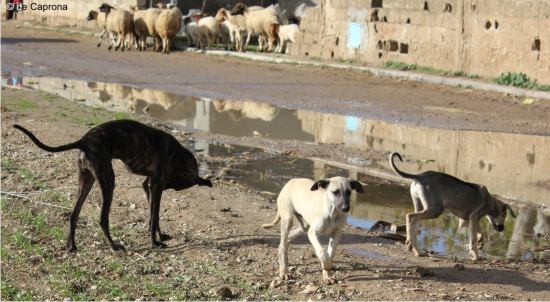
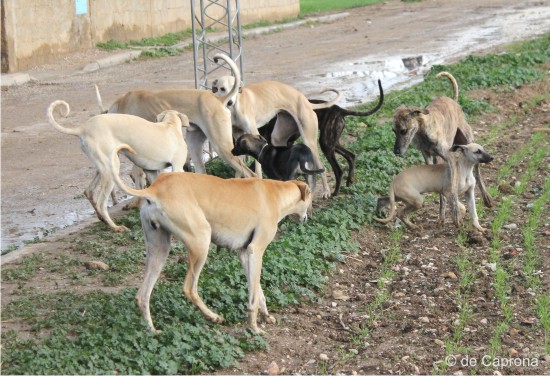
I
come
back
from
this
trip much impressed by what is no doubt a very
knowledgeable and passionate
concerted effort that has taken place there during the past decade
between Raouf Ochi and other local hunters. Not
only does an interest in maintaining this breed include more people of
various ages and in various locations, but the traditions regarding the
Art of Hunting with
Sloughis has also been passed on and attracts new adepts. All
of these Sloughis seemed to be in good
physical shape, I have seen scars resulting from injuries on only 3 of
them, I did not see obvious injuries resulting from dog bites. A visit
to an area in which a large group of male and female Sloughis of all
ages was
let loose on the neighboring field proved beyond any doubt that
temperaments in these Sloughis are very sound, their social instincts
intact, as I could witness no
true sign of aggression. I
recognized many subtle behavioral traits only found in dogs which know
how to interact with each other. This
applies
to
Sloughis
among
themselves
and
to
Sloughis
which
I
saw
later
on
coming
down
a
hill at dusk with other dogs .
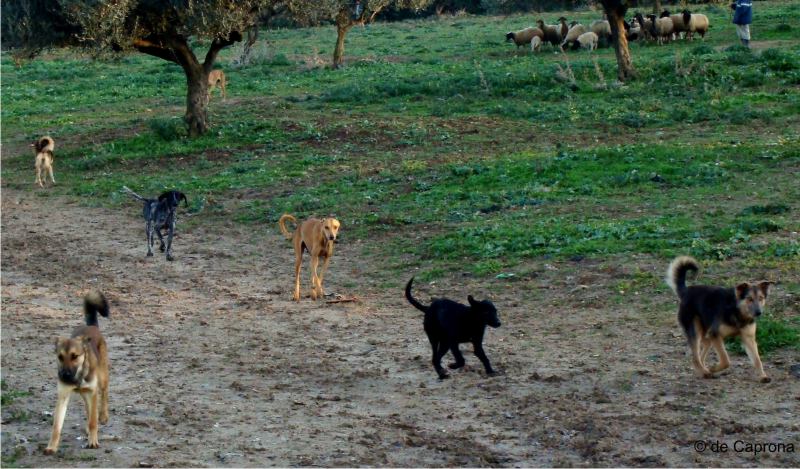
Red
Sloughia
coming
down
the
hill
at
dusk
with
other
dogs.
A
minority of the Sloughis had
cropped ears, a Tunisian tradition which is fading in that region. The
Sloughis,
in
particular
the puppies, are being vaccinated to counteract a very much present and
deadly Parvovirus,
probably the worst health threat to the preservation of the
Sloughi in North Africa at this time.
The future of the Sloughi in this region is in
good hands
at the
moment. Some of the breeders and owners I talked to in Bou Salem, but
also later on in Douz at the Festival, are against the importation to
Tunisia of Sloughis from the West, and are at the same time weary of
the exportation of Tunisian Sloughis to the Western World and Libya.
They
would prefer the Tunisian Sloughi population to reach a more stable
level of recovery in its own country
before some of its Sloughis leave the country and are lost to
reproduction in Tunisia.
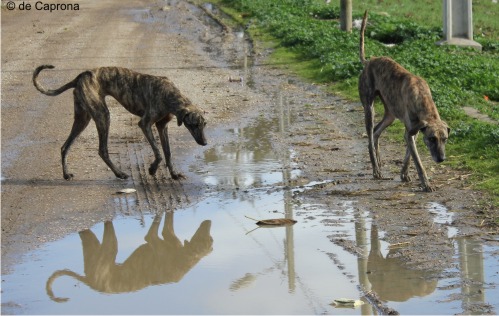 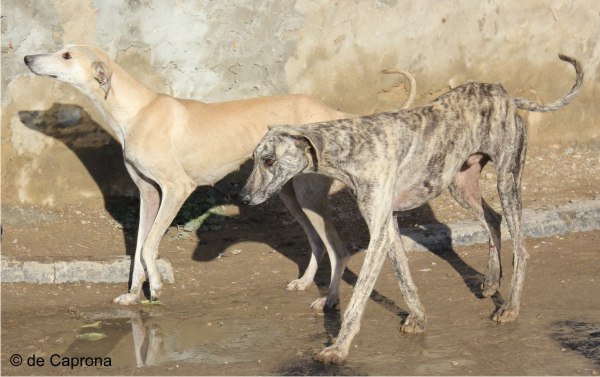
Brindle
descendants from Djoumine's Ghazel
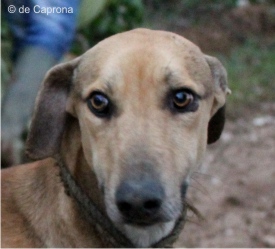 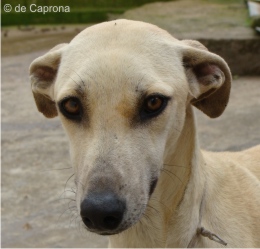
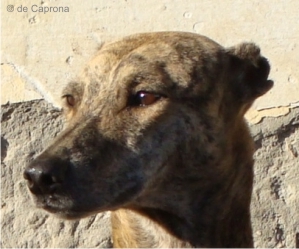
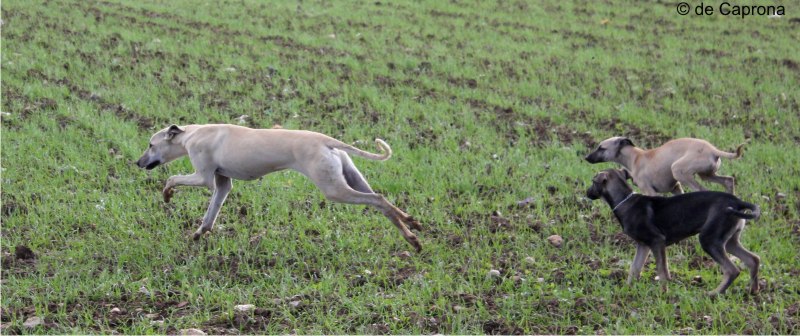
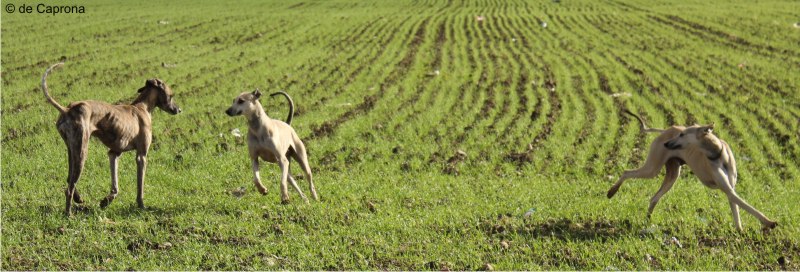
Second from left: Richa of Mateur
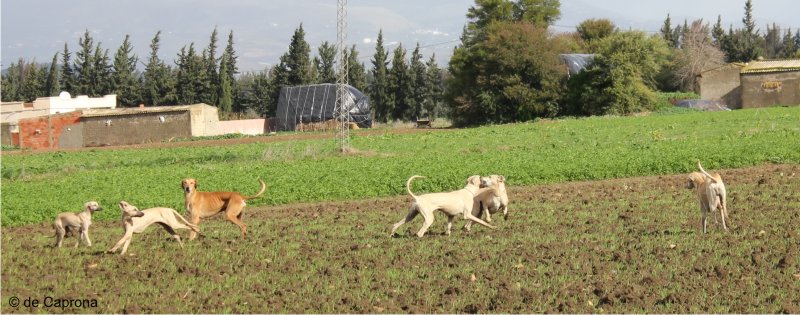

|


 BREEDING-
BREEDING-